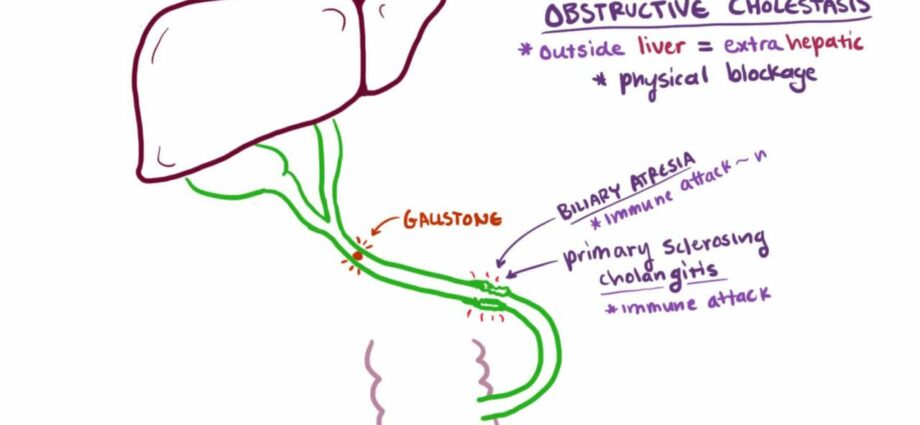What is cholestasis
Bile, a watery liquid produced by liver cells, is stored mainly in the gallbladder and discharged into the duodenum (the first part of the small intestine) through a conduit called the main bile duct. It mainly contains bile acids which facilitate the digestion of lipids.
Cholestasis is a decreased or stopped bile secretion, responsible for a defect in the transport of bile acids from the liver to the intestine and an increase in the concentration in the blood and tissues of bile acids.
There are two kinds of cholestasis:
—the intrahépatique cholestase : the cause of stopping the flow of bile is located inside the liver. The causes are linked to abnormalities in the functioning of the hepatic cells: viral hepatitis, drug hepatitis, alcoholic hepatitis, liver cancer, hepatic metastases, cirrhosis, abscess and hydatid cyst, primary biliary cirrhosis, hepatic granulomatosis.
—extrahepatic cholestasis : in this case, the cause of stopping the flow of bile is located outside the liver. The causes are dominated by: adenocarcinoma of the head of the pancreas, lithiasis (i.e. a stone) of the main bile duct, cholangiocarcinoma (cancer of the bile ducts), primary sclerosing cholangitis (inflammatory and intra- and extra-hepatic bile duct fibrosis).










